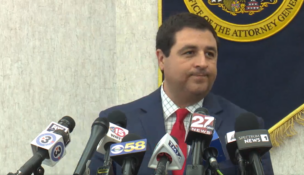Asset Purchase Case Analysis
By: dmc-admin//May 21, 2003//
The decision is important for reversing a decision which, in the words of Judge Patience Roggensack, dissenting from the court of appeals’ decision, “create[d] uncertainty in commercial transactions throughout Wisconsin where asset purchase agreements have been common occurrences.”
Ultimately, the inability of companies to safely enter into standard asset purchases would have significantly depressed the values that Wisconsin companies could receive when selling out, because buyers logically will pay more in an asset purchase than a stock purchase.
Judge Roggensack illustrated why in her dissent, setting forth the following scenario: “Buyer agrees to assume all undisclosed liabilities of Seller because Seller has warranted that only the disclosed liabilities, A and B, exist. If liability C arises, Buyer can sue Seller for breach of warranty. However, Seller will have nothing with which to pay any resulting judgment because Seller transferred all of its assets to Buyer under the asset purchase agreement, which Buyer well knows. From a business perspective, no reasonable Buyer would ever agree to such a transaction because Buyer would be assuming unending unknown liabilities in exchange for the right to sue a company Buyer knows has no assets.”
Another important aspect of the decision is the implicit rejection of the distinction made by the court of appeals between this action, based in tort, and cases from other jurisdictions based on the Comprehensive Environmental Response, Compensation, and Liability Act, 42 U.S.C. 9601-9675.
| |
||
|
|
||
| |
||
The court of appeals found it significant that, in those cases, CERCLA was enacted in 1980, after the asset purchases. By contrast, the court noted that Wisconsin has recognized tort liability for soil and water contamination under nuisance and negligence theories since long before the 1960 purchase.
Permitting actions sounding in tort, merely because they were not expressly excluded in the asset purchase agreement, as the court of appeals did, would create enormous potential liability unfathomable at the times of the purchases.
While nuisance actions for pollution may have existed in 1960, the unfortunate reality then was that pollution wasn’t a crime; it was a way of life. No one could have imagined the stigma or liability it carries today.
Furthermore, Wisconsin didn’t even adopt strict product liability until 1967. In 1960, suits for damages from asbestos, cigarettes, firearms, and unhealthy (as opposed to adulterated) food, were not merely unknown, but unthinkable; no reasonable party would have thought to exclude assumption of liability for such actions.
— David Ziemer
Click here for Main Story.
David Ziemer can be reached by email.
Legal News
- Attorney General Kaul releases update at three-year anniversary of clergy and faith leader abuse initiative
- State Bar leaders remain deeply divided over special purpose trust
- Former Wisconsin college chancellor fired over porn career is fighting to keep his faculty post
- Pecker says he pledged to be Trump campaign’s ‘eyes and ears’ during 2016 race
- A conservative quest to limit diversity programs gains momentum in states
- Wisconsin prison inmate pleads not guilty to killing cellmate
- Waukesha man sentenced to 30 years for Sex Trafficking
- 12-year-old shot in Milwaukee Wednesday with ‘serious injuries’
- Milwaukee man convicted of laundering proceeds of business email compromise fraud schemes
- Giuliani, Meadows among 18 indicted in Arizona fake electors case
- Some State Bar diversity participants walk away from program
- Wisconsin court issues arrest warrant ‘in error’ for Minocqua Brewing owner
WLJ People
- Power 30 Personal Injury Attorneys – Russell Nicolet
- Power 30 Personal Injury Attorneys – Benjamin Nicolet
- Power 30 Personal Injury Attorneys – Dustin T. Woehl
- Power 30 Personal Injury Attorneys – Katherine Metzger
- Power 30 Personal Injury Attorneys – Joseph Ryan
- Power 30 Personal Injury Attorneys – James M. Ryan
- Power 30 Personal Injury Attorneys – Dana Wachs
- Power 30 Personal Injury Attorneys – Mark L. Thomsen
- Power 30 Personal Injury Attorneys – Matthew Lein
- Power 30 Personal Injury Attorneys – Jeffrey A. Pitman
- Power 30 Personal Injury Attorneys – William Pemberton
- Power 30 Personal Injury Attorneys – Howard S. Sicula











